#burgess shale
Text
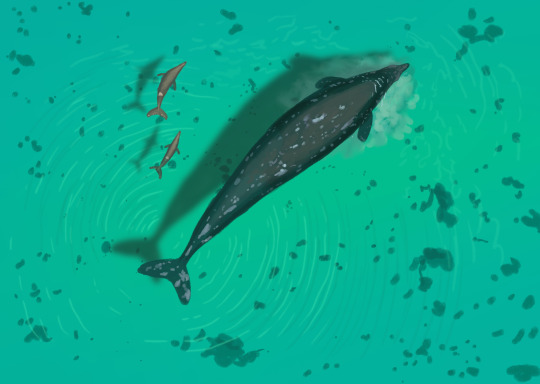



Results from the #paleostream! Perucetus, Ostromia (cleaning a Pleurosaurus, another wish), Burgessomedusa and Kambara.
#sciart#paleoart#paleostream#palaeoblr#jurassic#ostromia#jellyfish#crocodile#australia#burgess shale
1K notes
·
View notes
Text

[Image description: a blue, red and orange Anomalocaris, a Cambrian marine stem-arthropod swims through the ocean. Sunset, and the moon is visible through the water's surface. In the foreground are 2 translucent Waptia shrimplike arthropods, and a swarm of jellyfish. In the background is the shape of Balhuticaris, an enormous marine stem arthropod}
#anomalocaris#burgess shale#paleoart#palaeoart#palaeoblr#cambrian#digital illustration#sunset art#paleoblr#animals#jellyfish#wapitia#balhuticaris
1K notes
·
View notes
Text
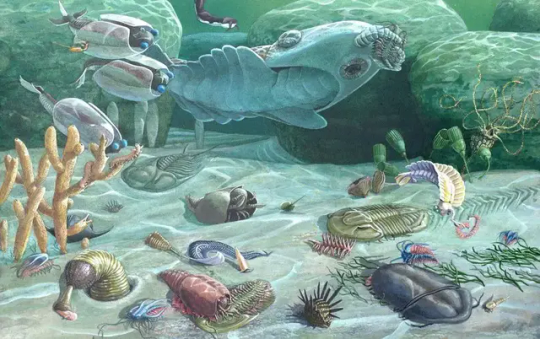
My favorite part about the Cambrian is that we see images like this, and we envision a modern human scubadiver swimming alongside the "largest species of the period," the Anomalocaridids, like they were cool insect whales or something.
The biggest guy in this picture was a foot and a quarter / ≤ 40 cm long. That's it. And its "enormous size" is what gave it an edge in this world.
If you went back here in a time machine and dipped a big bucket into the right part of the ocean, you'd be able to pick up everything it had to offer, barring some kind of giant jellyfish or something that hasn't fossilized well.
90 notes
·
View notes
Text
Titanokorys passing by a crowd of Cambrian critters
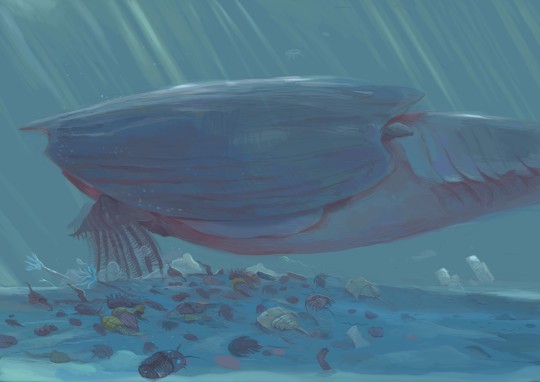
#art#illustration#digital art#paleoart#paleo art#illustrationdigital#paleontology#illlustration#arthropod#Cambrian period#radiodont#Titanokorys#burgess shale
880 notes
·
View notes
Text

And that's not all! Say hello to these three iconic cambrian critters, now in keychain form!
#I only have shipping to canada and usa because I haven't had the time to set up taxes for every country#but if you want one real bad and live outside of there let me know and I'll set that up real quick!#paleoart#cambrian#anomalocaris#hallucigenia#opabinia#burgess shale#prehistoric#paleontology#keychain#keychains
131 notes
·
View notes
Text

Anomalocaris Sculpture
Anomalocaris means odd shrimp. The mouthparts were discovered first and they resemble headless shrimp.

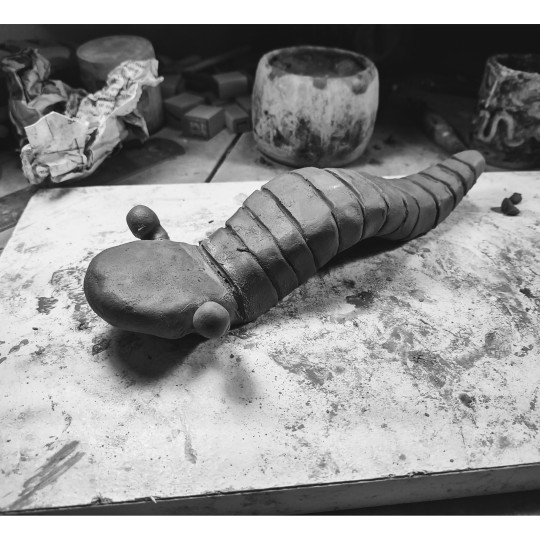
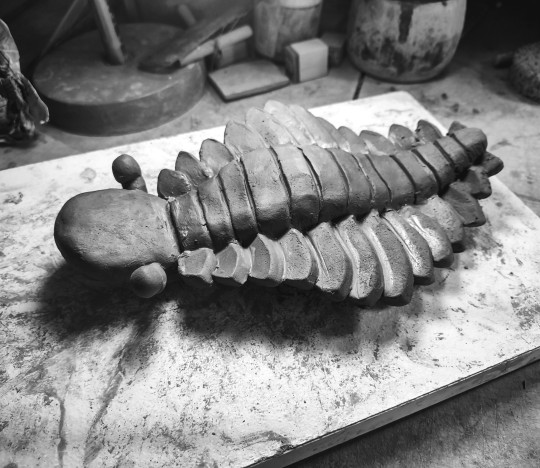
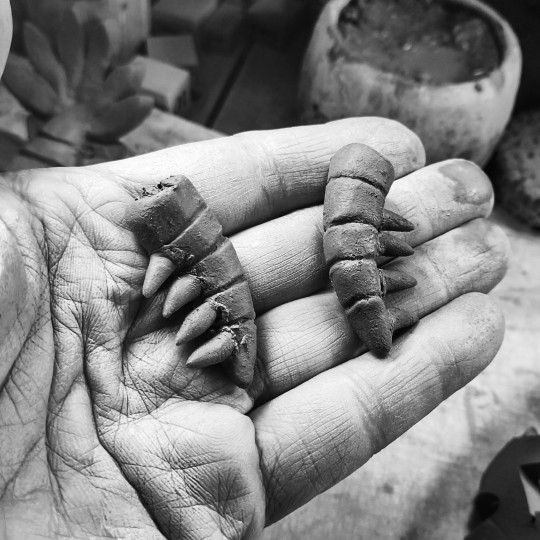

70 notes
·
View notes
Text


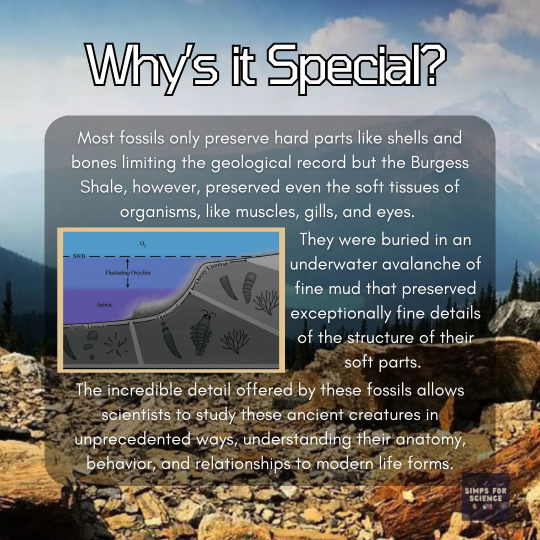
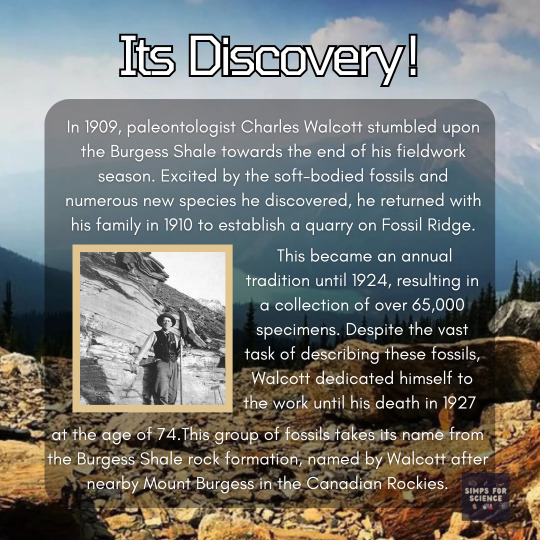

Have you ever heard of the 'Burgess Shale'? 😯 It's a goldmine of Cambrian fossils , a wonderland that is home to the most exceptional fossils from this era. Swipe through this post ➡️ to unearth the mysteries and ancient wonders that the Shale captured in its stones🪨 . To witness more of the prehistoric dance of animal life 🦕, join us on this monthly series 'Zoofabulous Time Trek'.
📸Image credits:
Image 1 - Olivia Little/ Freshdaily
Image 2- The Smithsonian National Museum of Natural History’s Burgess Shale Fossil Specimens
Image 3 - James St. John/ Wikimedia Commons
Image 4 - R. Gaines/ Semantic Scholar
Image 5 - The Burgess Shale Geoscience Foundation
#burgess shale#cambrian#cambrian explosion#fossils#paleo#paleontology#geology#zoology#animal#wildlife#fauna#prehistoric#education#science#science facts#study blog#discover#scicomm#research scientist#explore#earth
25 notes
·
View notes
Text


Happy Fossil Friday!
Who: Anomalocaris canadensis
name meaning: "Odd shrimp" "from Canada"
pronunciation: Ah-nom-ah-low-care-iss can-ah-den-sis
What: A Dinocarid, radiodont arthropod with two long grasping appendages and large compound eyes. A ray of wing-like projections along the trunk and fish-like tail.
When: Cambrian Period (Anomalocaris sp. ranged 516 to 505 Ma)
Where: Burgess Shales British Columbia, Canada. From the Stephen/Burgess Shale Formation.
Fun fact!: A. canadensis is the type species for the Anomalocaris genus within Anomalocaridae and bonus fun fact: Since Anomalocaris are soft bodied organisms, they do not preserve well (usually) in the fossil record, with the exceptional cases of place like the Burgess Shale in BC. For many years, palaeontologists believed that Anomalocaris was actually three separate organisms, due to the poor preservation of the "softer" portions of the body, making it seem like the frontal appendages, mouth parts, and trunk of the animal were from different creatures. Exceptionally preserved specimens like the Left image above, show Anomalocaris in full form.
(def: the "type species" is the species upon which a genus's description is based and for which the genus is named and associated with).
Why are they cool?: Apart from the charismatic (in my personal opinion "adorable") visage of this tough little arthropod, they could use their long, segmented frontal appendages to curl and grasp prey, pulling it under to the mouth to be eaten, one of the first predatory creatures to emerge during the Cambrian Explosion.
Here is a link to a video showing Anomalocaris canadensis in its natural habitat from the wonderful Burgess Shale website, for those interested, check out their other videos on Burgess Shale/Cambrian fauna.
Image Credits: (Left: Fig. 1 - Daley, Allison C., and Gregory D. Edgecombe. “Morphology of Anomalocaris Canadensis from the Burgess Shale.” Journal of Paleontology 88, no. 1 (2014): 68–91. https://doi.org/10.1666/13-067. Right: M. Cross)
#palaeontology#paleontology#fossil friday#fossils#paleo#anomalocaris#cambrian#cambrian explosion#burgess shale#canada#british columbia#arthropod#anomalocaris canadensis
22 notes
·
View notes
Text
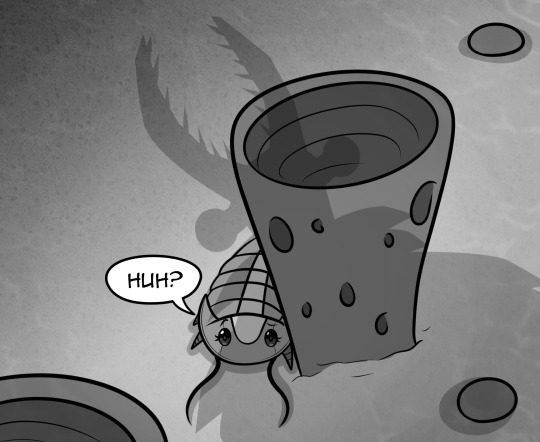
A preview for chapter 0 for my webcomic series, Burgess Shale.
Coming soon on November 30th or so...
#burgess shale#webcomic#comic#webtoon#burgess shale webcomic#my art#original art#original character#original project#cambrian#cambrian period
30 notes
·
View notes
Text

Odaraia alata, (yet another) strange arthropod of the Burgess Shale.
Unlike many of the 'weird wonders' of the Burgess like Hallucigenia or Opabinia, Odaraia was quickly identified as an arthropod (although its precise position remains unclear) but what sets it apart is its completely unique functional morphology: in addition to a very unusual telson with three flukes (quite reminiscent of the tail of a plane), Odaraia had a bivalved carapace that almost completely enclosed its body (Briggs & Whittington, 1981), like a living burrito with many legs.
Since the legs were unable to reach out beyond the shield, Odaraia must have spent its life swimming (possibly on its back like a fairy shrimp, based on its center of gravity), using its legs to create currents to guide food particles into the shield space and towards the mouth; the tail flukes likely assisted in stabilizing and steering. The whole animal was about 15 cm long (Briggs & Whittington, 1981).
In the background are Pirania muricata sponges, contemporary to Odaraia and also found in the Burgess Shale (Walcott, 1924).
References and notes about the reconstruction:
The cephalic appendages of Odaraia are poorly known; this reconstruction is based on the interpretation of Briggs & Whittington (1981), which consists of a pair of denticulated, mandible-like structures and, anterior to it, two possible pairs of simple segmented appendages - but the latter are highly uncertain and should be taken with caution.
Briggs, D. E. G., & Whittington, H. B. (1981). The arthropod Odaraia alata Walcott, Middle Cambrian, Burgess Shale, British Columbia. Philosophical Transactions of the Royal Society of London. B, Biological Sciences, 291(1056), 541–582. https://doi.org/10.1098/rstb.1981.0007
Budd, G. E. (2008). Head Structure in Upper Stem-Group Euarthropods. Palaeontology, 51(3), 561–573. https://doi.org/10.1111/j.1475-4983.2008.00752.x
Charles D. Walcott. (1924). Middle Cambrian Spongiae. In Cambrian Geology and Paleontology (Vol. 67, pp. 261–364). Smithsonian Institution. https://www.biodiversitylibrary.org/item/9442
#odaraia#arthropod#pirania#protomonaxonid#sponge#burgess shale#cambrian#paleozoic#paleontology#palaeoblr#paleoart#my art
131 notes
·
View notes
Text

back on my creeechur bullshit!!! redraw of anomalocaris and practicing new lettering
#mine#paleozoic pals#illustration#art#artists on tumblr#paleoart#palaeoblr#procreate#anomalocaris#cambrian#burgess shale
60 notes
·
View notes
Photo

hallucigenia sparsa in the style of those reflective stickers everyone loved in 3rd grade :) she is transparent!
#hallucigenia#hallucigenia sparsa#sticker#art#artists on tumblr#burgess shale#ily csp tone scraping effect <3#myart#kae's art#mine#made w csp#don't come @ us about the number of legs/spines being innacurate we can't count lol#might put this on redbubble
256 notes
·
View notes
Text


Opabinia wondering whether it's worth eating a spiky, particularly small Hallucigenia
302 notes
·
View notes
Text

Class doodles p.3: Cambrian central
Using the pen a little more
10 notes
·
View notes
Text
Bivalved arthropods from the Cambrian
Surusicaris elegans
a taco shrimp found in the burgess shale
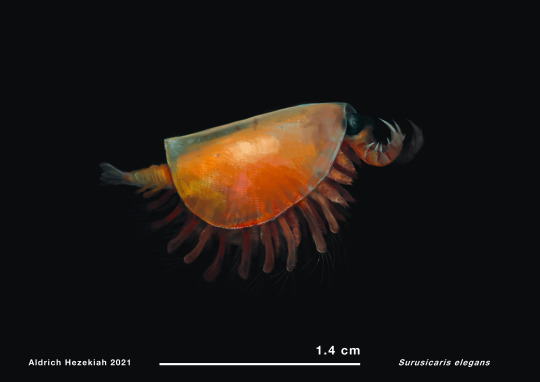
Ercaicunia multinodosa
leggy boi from the chengjiang biota
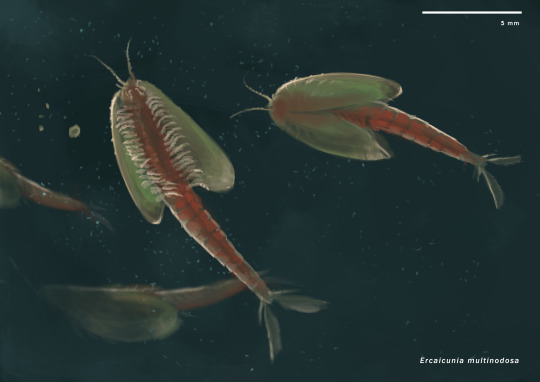
Erjiecaris minisculo
related to Ercaicunia, although it's tempting to draw it as a boomerang boi, it was most likely compressed into that shape after death

#paleo art#paleoart#paleontology#cambrian#cambrian period#burgess shale#chengjiang biota#chengjiang#fossil#bivalved arthropod#arthropod#invertebrate
164 notes
·
View notes
Text

Burgess Shale buddies 🌊
192 notes
·
View notes